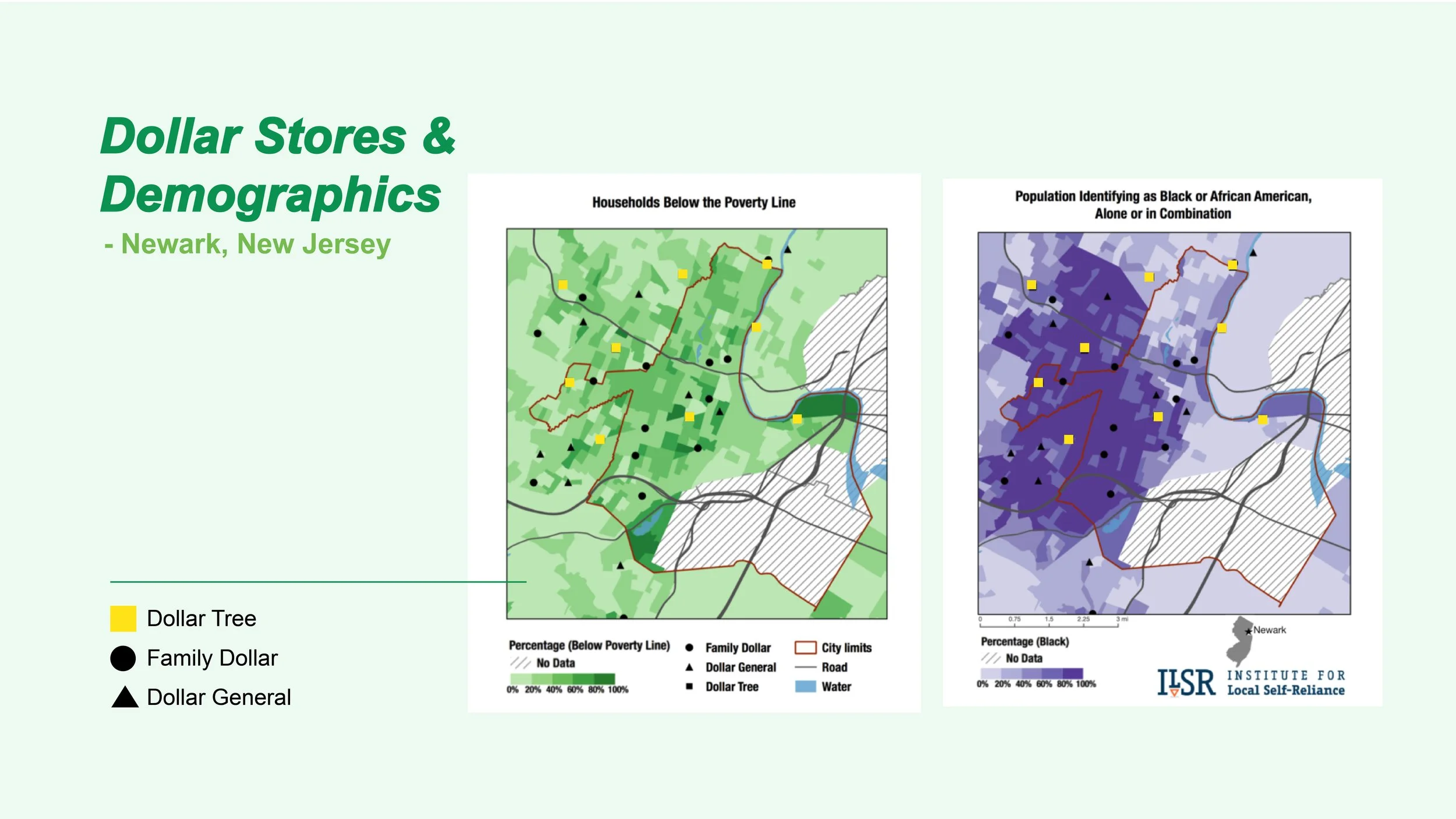Exploring Healthier Alternatives
The Dollar Tree of Life is a company rebranding and business proposal project that aims to reduce food waste and offer healthier alternatives for low income communities and areas considered food deserts. This project focuses on creating a solution for 8/17 United Nations Sustainable Development Goals.
ROLE: Concept, Research, Product Design, Creative Direction, Logo & Branding, User Journeys, Testing and Product Design
TOOLS: Photoshop, Illustrator, Rhinoceros, Fusion 360 & Sustainable Minds
TREND
Food plays a vital role in peoples quality of life. For many, fresh produce is often hard to access, ultimately leading to poor health. During the pandemic we have seen a rise in COVID cases and deaths within low income neighborhoods and neighborhoods of color.
PROBLEM
Those living in these areas typically do their grocery shopping at their local Dollar Tree or other discount stores. However, many of these type of stores do not offer fresh options and rather canned alternatives instead.
Here we see a map of Newark NJ and the amount of dollar trees and other discount stores in the area.
REASEARCH
Dollar Tree is highly sought after by those looking to save money as everything in the store is sold for a dollar. People enjoy going there knowing they can often get great deals on items. However, their lack of healthy options have caused a backlash in low income communities. Shoppers are in need of a healthier and affordable solution.
I did further research into local farmers markets in the area and found that there are many in such close proximity to dollar trees but there has been no connection made.
FINDINGS
After doing primary and secondary research and conducting in-context user experience journeys, I found that there are 3 main areas that need to be addressed:
Implement Nutritional Food
Connect Communities
Improve Store Experience
I began by developing a system diagram to help illustrate how local farmers could play a bigger role in giving people access to healthier options. To do this, I wanted to make the system more circular to include local farmers.
SKETCHES
SOLUTION
In order to optimize the Dollar Tree brand experience and improve the brand I developed a new logo and system. The new logo embodies affordability, unification of communities and the dollar tree of life program through the combination of symbols.
Thus the dollar tree of life is born. This program takes the ugly or “real” produce rejected by the USDA and otherwise sent to landfill by farmers and turns them into unique, quick and healthy meals options for customers. From my research I found that even when offered fresh produce, customers will often still choose easier food options due to lack of nutritional education.
SUSTAINABLE FOOD PACKAGING
I developed sustainable packaging made from Suprapulp, sugarcane waste, as it is compostable meaning it releases nutrients back into the soil once discarded. I chose sugarcane waste for its ability to be heated in an oven and frozen.
The packaging serves as both a means to protect the food but also become a holder to cook and hold the food. Perforations at the base of the cone make it easy for the user to tear off.
IN-STORE EXPERIENCE
These new meals would be housed in a new point of sale stand that I developed. The form is inspired by the new dollar tree of life logo. The idea is that these displays would be located inside the center of the Dollar Tree with the idea that it will help disrupt the current overstimulation in the store.
The display features a refrigerated system that holds the dollar tree of life meals as well as a composting bin. In the center, seasonal fresh “real” produce can be displayed and offered to customers at a lower price.
Another application for this idea would be to have a community garden on the roof of each Dollar Tree store. This rooftop would house a food stand where people can gather and enjoy a healthy meal together. The space would also allow the community to grow food together and could house a number of sustainability-oriented workshops to better educate individuals on the importance of healthier alternatives and how they can grow their own produce at home.



















